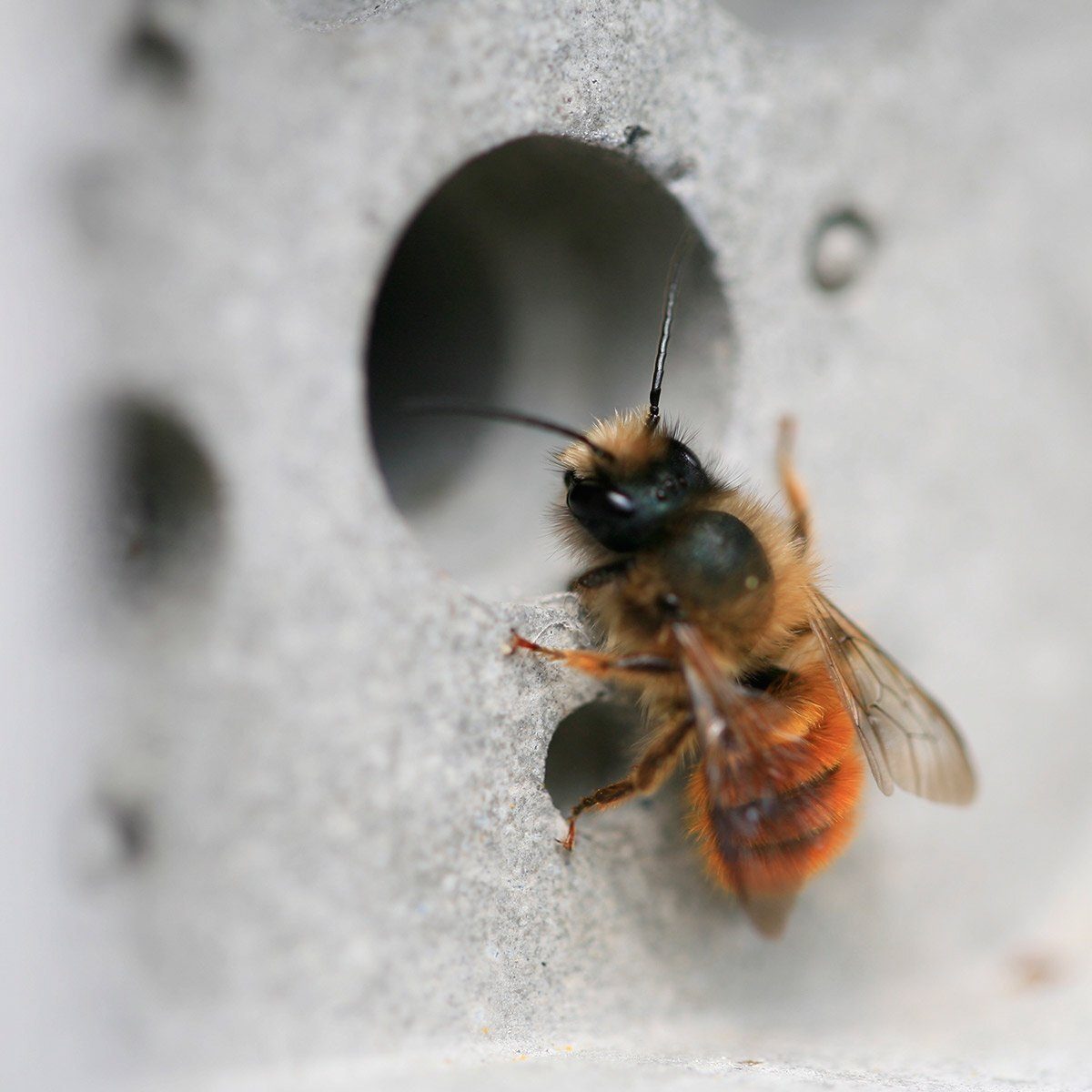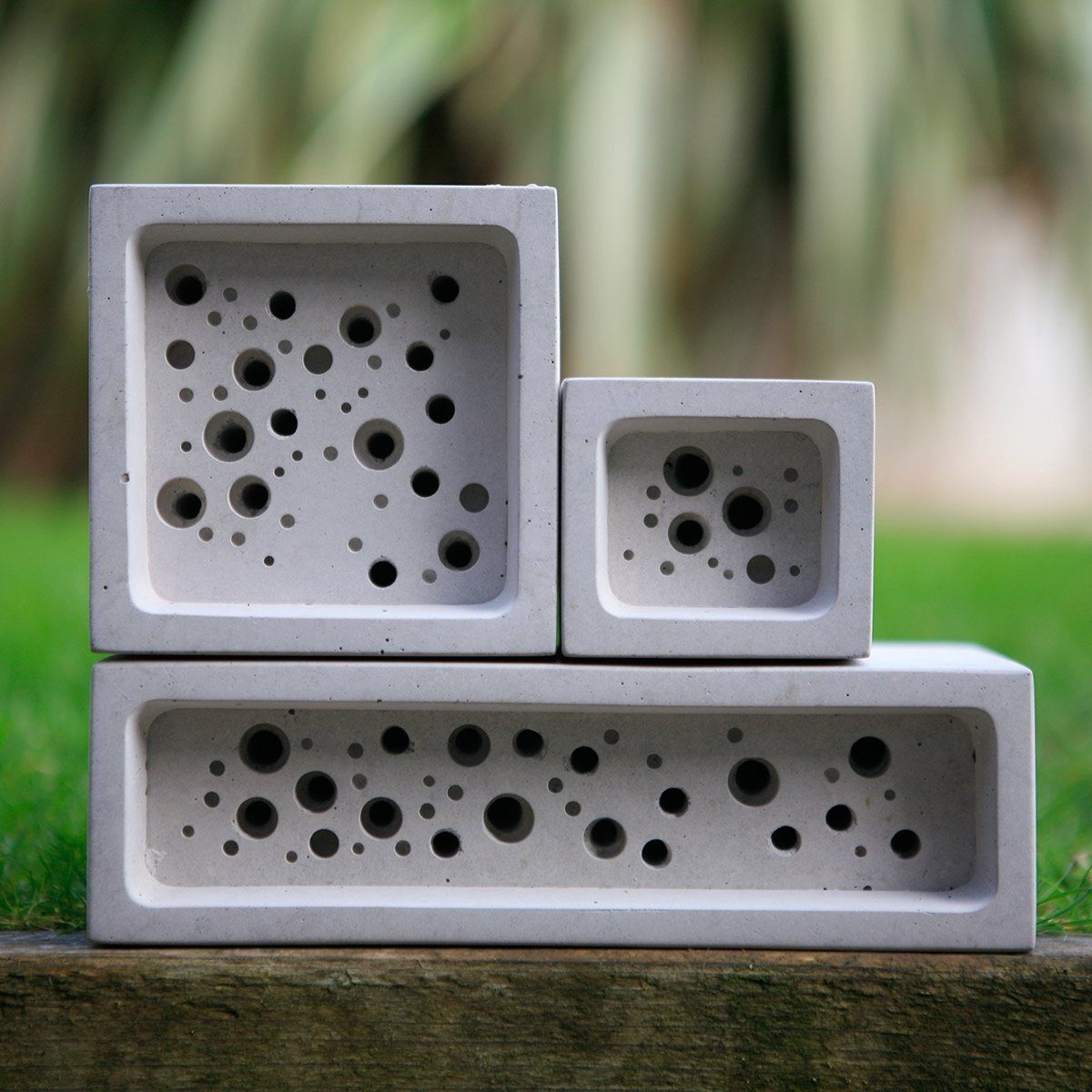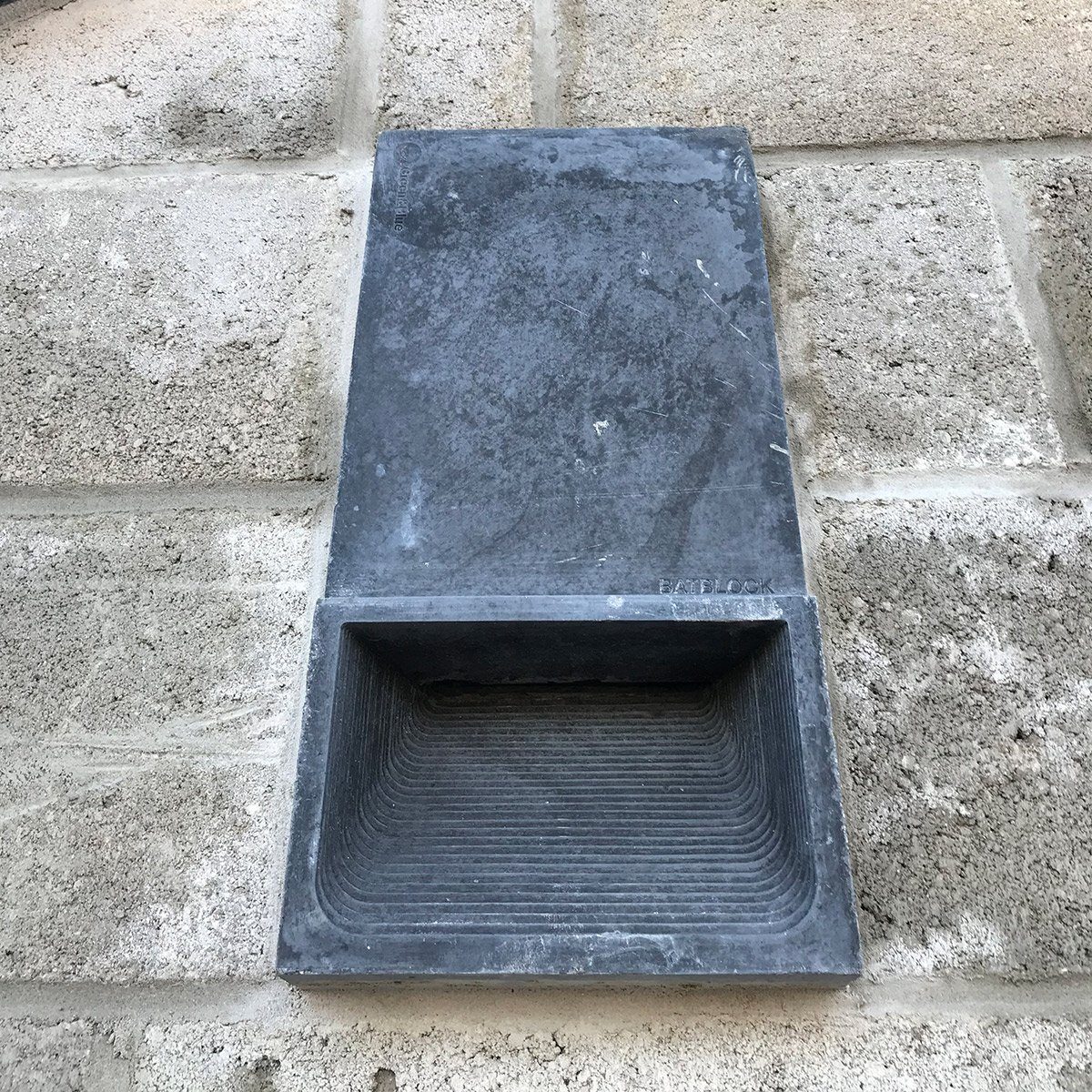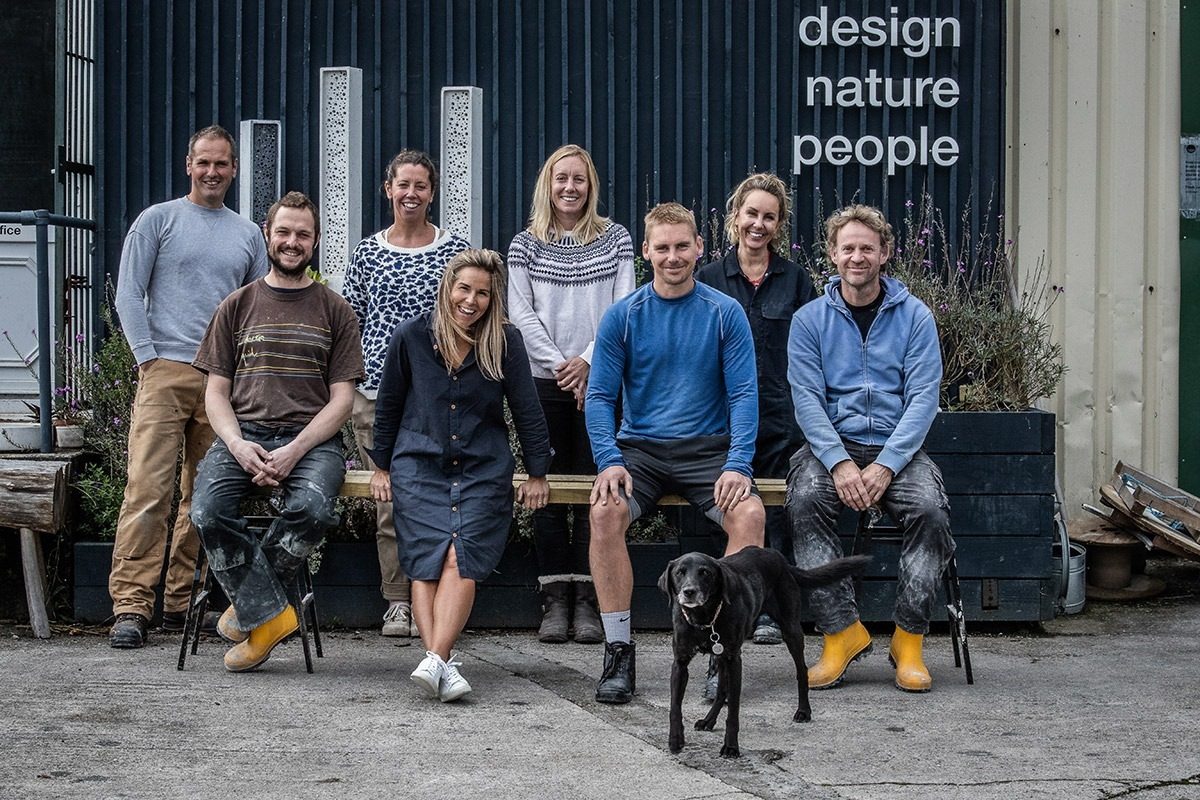 851
851  3 mins
3 mins Married couple Kate and Gavin Christman are working to save bees with elegantly designed household materials like the Bee Brick.
After working several years at the household technology company Dyson, Kate and Gavin Christman decided to take the leap and open their own design workshop in Cornwall.
Their idea was to combine their passion for design and nature.
Merging their interests, the Christmans co-founded Green&Blue.
Today this forward-thinking enterprise is creating building materials for homes that are simultaneously homes for the local wildlife.
A little background
In 2005, Kate and Gavin moved to Perranporth, Cornwall, where they co-founded Green&Blue.
“The name Green&Blue comes from childhood memories of rolling green hills and clear blue skies and good times.”
Initially operating out of their garden shed, they are now a team of 10 people.
Today the team at Green&Blue is manufacturing stylish, wildlife-friendly household materials using waste materials sourced from the local china clay industry.

Solitary bees do not live in hives, they nest alone – Photo courtesy of Green&Blue
Green&Blue’s stand-out product is the “Bee Brick.”
It is a building brick with small holes that is used in place of standard bricks.
Ingeniously, the Bee Brick provides nesting places for solitary bees.
“We believe passionately that every new house built needs to provide a home for wildlife as well as for us. With so many species in decline, we have to rethink the way we plan, build and manage both housing and within our own gardens,” say the Christmans.
Protecting other species
They have since developed a range of products that offer nesting opportunities for solitary bees, birds, and bats.
And considering that certain animals like swifts or bats are experiencing particularly threatening declines, they have also created specific products for these animals.
Their commitment to creating a brand and products that contribute to the environment beyond profit has helped them to obtain B Corporation certification in 2018.
Certified B Corporations “are businesses that meet the highest standards of verified social and environmental performance, public transparency, and legal accountability to balance profit and purpose.”
Certified B Corps are a global movement of people working using business as a force for good in the world.
The solution is in the Bee Brick design
The Bee Brick, their most popular item, is used with in building construction as well as a stand alone in one’s garden.
It is designed as a perfect refuge for solitary bees to nest in their tiny holes.
Many people are unaware that over 90% of all bee species are “solitary.”
These bees do not live in hives; they nest alone.

Types of Bee Bricks – Photo courtesy of Green&Blue
As part of the pollinator family, bees are is responsible for one-third of the food eaten in the UK.
With the use of chemicals in farming and decreasing wild nature landscapes, solitary bee populations are declining.
This Bee Brick, which comes in many shapes and sizes, welcomes bees back into human habitats.
The Bat Block
Green&Blue has also partnered with the Bat ConservationTrust to design the Bat Block.
The Bat Block offers a safe nesting space for local bats for their hibernation or maternity periods.
Bats represent a quarter of the native mammal species in the UK and perform insect control and some pollination.
They also suffer from significant habitat stress due to human activity.
And bat populations have undergone dramatic declines over the last century.
The Bat Conservation Trust, like Green&Blue, envisions “a world rich in wildlife where bats and people can thrive together.”
The Bat Conservation Trust and Green&Blue are working together “to enhance the landscapes on which bats rely as it is essential in protecting the UK’s native bat populations.”
Green&Blue donates 10% of all sales of the Bat Block to the Bat Conservation Trust’s Roosting Scheme.
The scheme then collects data and studies bats to help improve their chances of survival.
And naturally, all the materials used in making the blocks are entirely British-made in a 100% green energy workshop.

The Bat Block creates roosting space for crevice dwelling bats – Photo Courtesy of Green&Blue
The big picture
Green&Blue adheres to the idea that “Society’s most challenging problems cannot be solved by government and nonprofits alone. By harnessing the power of business, B Corps use profits and growth as a means to a greater end: positive impact for their employees, communities, and the environment.”
Green&Blue has developed an organisational ecosystem that is contributing to the broader ecosystem of wildlife and nature.
They are a great example of combining what you love with taking care of others and the planet.
They are bringing impactful, tangible solutions into the backyards of people.

Photo Courtesy of Green&Blue
Read more about the Bee Brick, the Bat Block and the work Green&Blue and Bat ConservationTrust .
Follow Green&Blue on Instagram
Our editors independently choose all the products and services featured on The Inspirer.
We earn no affiliate commissions from any of the products or services featured in our articles.
You might also like reading about how the marine conservation group called “Bite Back” is working to change attitudes about sharks.


 https://boesels.at/wp-content/uploads/2020/12/Sabine-und-Roland-4.jpg
https://boesels.at/wp-content/uploads/2020/12/Sabine-und-Roland-4.jpg https://www.shutterstock.com/image-photo/santa-claus-working-home-making-toys-345281699
https://www.shutterstock.com/image-photo/santa-claus-working-home-making-toys-345281699